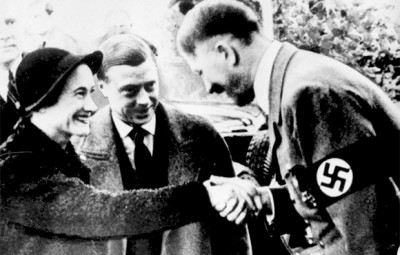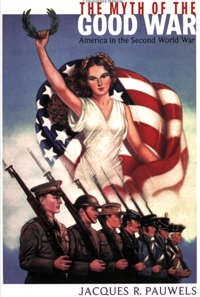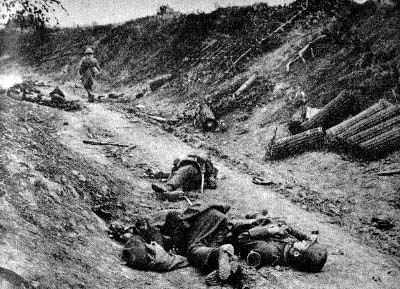
Dr. Jacques Pauwels is not the kind of historian you often hear about in the mainstream media. He’s obviously not the kind of “expert” they refer to for historical facts. Actually, one crucial propaganda method consists in excluding current events from their historical context.
Listening to Pauwels makes one realize the scope of
the lies we’ve been fed about the Second World War, fascism and
democracy, and how myths related to previous wars need to be upheld in
the mainstream discourse to satisfy never ending war propaganda needs.
In a speech held December 15 in Montreal, he
explained that World Wars I and II were all about crushing mass
revolutionary movements.
The myth of the Good War
 Every
time Westerners’ approval for war is required, the myth of the good war
surfaces: the Second World War was a good war, a necessity to quench
Hitler’s blood thirst. Pauwels tears this myth apart, uncovering the
vicious nature of the western elite.
Every
time Westerners’ approval for war is required, the myth of the good war
surfaces: the Second World War was a good war, a necessity to quench
Hitler’s blood thirst. Pauwels tears this myth apart, uncovering the
vicious nature of the western elite.
The reasons for the US involvement in World War II lie
in the social-economic conditions of the time, not in an outpouring of
compassion destined to save humanity from fascism. The US elite was
actually in favor of fascism, a very convenient tool to crush the mass
revolutionary movement embodied by the Russian Revolution and the USSR.
WWII was in fact a continuity of WWI. “We are always told that WWI
started with the assassination of Archduke Franz Ferdinand, but it’s not
true”, Pauwels says. It is indeed a well established myth carried on by
various sources, whether history is written by “thousands of eminent experts, scholars, and leaders” like in Encyclopedia Britannica, or by just about anybody, like in Wikipedia:The outbreak of war
With Serbia already much aggrandized by the two Balkan Wars (1912–13, 1913), Serbian nationalists turned their attention back to the idea of “liberating” the South Slavs of Austria-Hungary. Colonel Dragutin Dimitrijević, head of Serbia’s military intelligence, was also, under the alias “Apis,” head of the secret society Union or Death, pledged to the pursuit of this pan-Serbian ambition. Believing that the Serbs’ cause would be served by the death of the Austrian archduke Francis Ferdinand, heir presumptive to the Austrian emperor Francis Joseph, and learning that the Archduke was about to visit Bosnia on a tour of military inspection, Apis plotted his assassination. (World War I, Encyclopedia Britannica)
The immediate trigger for war was the 28 June 1914 assassination of Archduke Franz Ferdinand of Austria, heir to the throne of Austria-Hungary, by Yugoslav nationalist Gavrilo Princip in Sarajevo. This set off a diplomatic crisis when Austria-Hungary delivered an ultimatum to the Kingdom of Serbia,[10][11] and international alliances formed over the previous decades were invoked. Within weeks, the major powers were at war and the conflict soon spread around the world. (World War I, Wikipedia)
 Both
WWI and WWII had two dimensions: the vertical dimension, namely the
rivalry between empires, and the horizontal one, class warfare, Pauwels
explains.
Both
WWI and WWII had two dimensions: the vertical dimension, namely the
rivalry between empires, and the horizontal one, class warfare, Pauwels
explains.
These wars were actually the best way for the western
elite to cope with the ever growing revolutionary and democratic
movements fueled by dire economic conditions and which threatened the
established order.
In Nietzsche’s view for example, Pauwels says “war was
the solution against revolution, since in a war, there are no
discussions, like there is in a democracy. In a war, the minority, the
elite, decides and the majority, the proletarians, obey.”
No comments:
Post a Comment